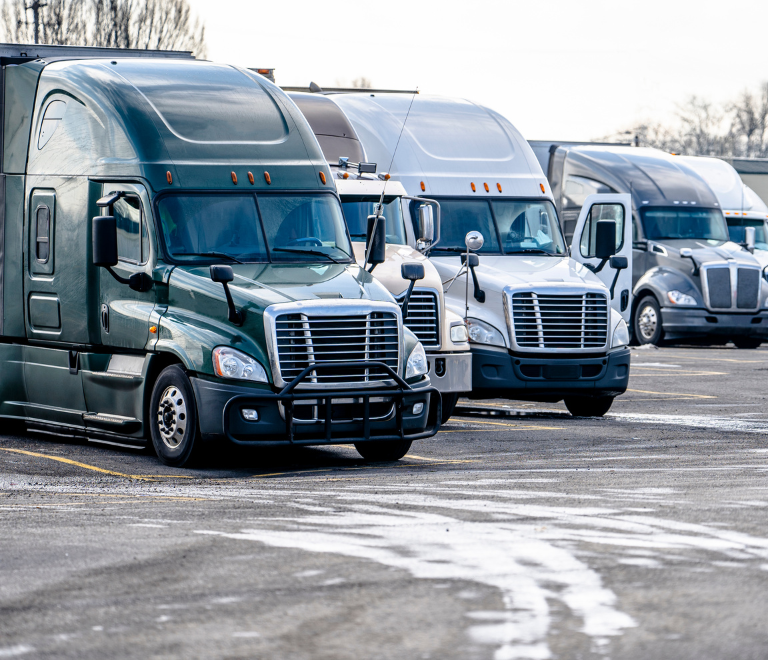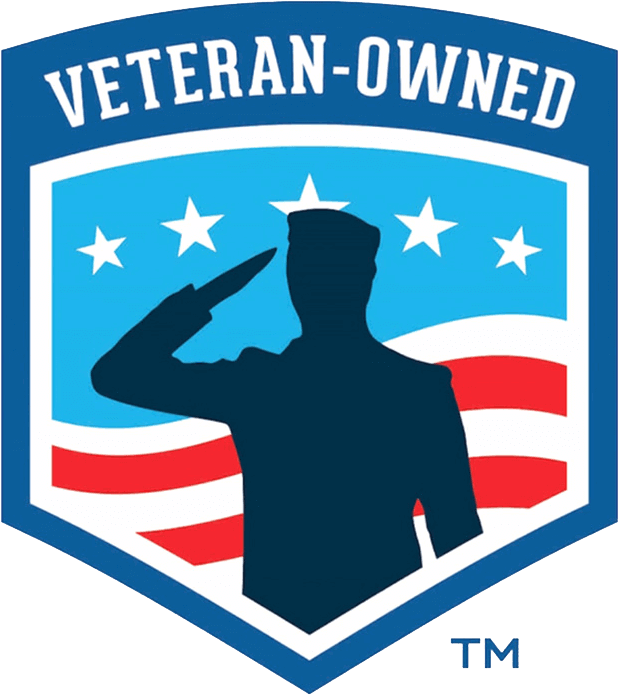Being a truck driver is more than just transporting. It presents a lot of opportunities you can take advantage of. For instance, you don’t have to stop hauling regular freight; you can accept other kinds of goods to greatly boost your earning potential.
You might be able to get a variety of trucker endorsements that will allow you to make more money with less effort, depending on the class of your Commercial Driver’s License (CDL). To help you kickstart your career, we’re going to dive into the many kinds of CDL endorsements and CDL endorsement codes. We’ll also go over the primary procedures in California and other states for adding an endorsement to a CDL.
What are the Different Types of CDL Classes?
To drive a commercial motor vehicle (CMV), you must first obtain the appropriate CDL before you can begin earning endorsements.
Whichever CDL class you want will depend on the kind of CMV you intend to operate. The type of commercial vehicle you are legally allowed to operate, as well as its Gross Vehicle Weight Rating (GVWR), are determined by the three classes into which your CDL falls.
Since April 1, 1992, truck drivers have been obliged to possess a CDL. The purpose of this mandate is to decrease the number of unqualified drivers who operate heavy vehicles. It should be noted that several states have additional CDL classes, such as those that grant exemptions for first-response trucks or farming vehicles.
The following are the three main categories of permits:
Class A CDL
You can operate a vehicle with a gross combined weight rating (GCWR) of 26,001 pounds or more if you possess a Class A CDL. This covers a vehicle or object that is being towed and has a gross vehicle weight rating (GVWR) greater than 10,000 pounds.
The following are the types of vehicles that you can drive with a Class A CDL:
- Livestock carriers
- Semi-truck with a flatbed trailer
- Tank vehicles
- Tractor-trailer buses
- Tractor-trailers and flatbeds
- Truck and trailer combinations
If you have obtained the necessary CDL Class A endorsements, you may even be permitted to drive certain Class B and Class C trucks.
Typical careers for CDL Class A holders are as follows:
- Bus drivers
- Couriers
- Heavy Truck drivers
Class B CDL
You are allowed to operate a vehicle with a gross combined weight rating of 26,001 pounds or more once you have obtained a Class B CDL. The gross vehicle rating cannot be more than 10,000 pounds if the car is being utilized for towing.
The vehicle you are towing may not have a GVWR greater than 10,000 pounds.
The following are the types of vehicles that you can drive with a Class B CDL:
Box trucks (designed for delivery services)
- City and tourist passenger buses
- Dump trucks with a small trailer
- Segmented buses
- School buses
- Tractor-trailers
- Straight trucks
If you make the effort to obtain the proper Class B endorsement, you can operate some Class C vehicles, just like having a Class A CDL endorsement lets you drive various cars.
Class C CDL
Operating a single vehicle with a GVWR of less than 26,001 pounds, a vehicle towing another vehicle with a GVWR of less than 10,000 pounds, or a passenger vehicle carrying 16 or more persons (including the driver) requires a Class C CDL and the necessary driver training. Operating a truck carrying hazardous cargo that has been classified as hazardous material (HAZMAT) by federal regulations also requires this type of CDL.
With the appropriate endorsements and a Class C CDL, you can operate:
- Passenger vans
- Small trucks equipped to transport HAZMAT
- Small truck towing a trailer

How Many CDL Endorsements Are There?
Different CDL endorsements can impact the CMV you can operate and whether you can drive passengers, as explained in the classes section. You must apply for the endorsement you want at the same time as your CDL. You will be given the proper CDL endorsement test to take at one of the approved testing centers in your area once you’ve indicated which ones you want. You should expect varied endorsement criteria for each state, which you can obtain online, just as there are differences in CDL classes between states.
To operate specific types of Commercial Motor Vehicles (CMVs), commercial drivers must possess CDL endorsements. The following federal CDL endorsements need additional testing in addition to the requirements for a Class A, B, or C CDL. Note: Depending on the state, there might be more endorsements.
The many endorsements you can look into consist of:
H Endorsement
The CDL holder can operate a vehicle carrying HAZMAT when they have a H endorsement. You must first pass a written knowledge test to confirm that you are qualified to transport hazardous materials before you can obtain a HAZMAT endorsement.
N Endorsement
An operator can operate a tanker truck—a vehicle that transports resources in the form of liquids and gasses—if they have an N CDL endorsement. A driver must pass a written knowledge exam to receive a tanker CDL endorsement N.
P Endorsement
Getting a P endorsement is the first step in operating a car or bus that can fit 16 people—including the driver—or more. Only individuals who have completed both the written knowledge exam and the road test are eligible to receive the passenger P endorsement. Separate paperwork and a federal background check are required if you wish to operate a school bus since school bus drivers need two different endorsements.
S Endorsement
The S endorsement is the second endorsement required for a school bus driver. As mentioned above, passing a written knowledge exam, a road skills test, and a background check are prerequisites for obtaining an S endorsement.
T Endorsement
You can drive a double or triple trailer with the T endorsement. You will have to pass a written knowledge exam to receive a T endorsement.
X Endorsement
With the X endorsement, you can drive a car that transports hazardous materials inside of a tank. You will have to pass a written knowledge exam to receive this combo endorsement.
CDL Restrictions
You can get CDL restrictions in reverse, just as your endorsements provide you access to various vehicle types and loads. The cars you can operate will be restricted by the limits listed on your CDL.
E Restriction
The kind of transmission you are permitted to use about a CMV is denoted by the E limitation. Your CDL will be flagged with an E restriction if you use an automatic gearbox during your road skill test. You are not allowed to use a CMV with a manual transmission due to this E limitation.
L Restriction
Your CMV’s permitted kind of braking system is determined by an L limitation. If your CDL has an L restriction, you are not allowed to drive a car with complete air brakes. Driving a car without a fully functional air brake system or failing the air brakes knowledge test will result in an L restriction.
M Restriction
Any Class A CDL that obtained its P (passenger) or S (school bus) endorsements with a Class B or C passenger vehicle is subject to an M restriction. The driver is not permitted to operate any Class A passenger cars while under this M restriction.
N Restriction
Class B CDL holders who earned their P (passenger) or S (school bus) endorsement in a Class C passenger vehicle are eligible for the N restriction. It is not permitted for the Class B CDL holder to operate a Class B passenger vehicle.
O Restriction
Class A CDL drivers who completed their road competence exam in a car without a pintle hook or fifth-wheel connection are subject to the O restriction. The driver is restricted by an O to only CMVs that do not have a fifth-wheel connection.
V Restriction
When a medical variation is reported to the Federal Motor Carrier Safety Administration (FMCSA), the holder’s CDL is marked with the V restriction. Medical deviations are limitations that may pose a risk when driving. Among the variations in medicine are:
- Diabetes
- Eyesight impairment
- Hearing issues
- Seizures
Z Restriction
If your CDL has a Z limitation, it implies you are not allowed to drive any commercial motor vehicle with complete air brakes. If the vehicle you used to complete the road skills test had air over hydraulic brakes, you will be subject to the Z restriction.
Which CDL endorsements are available for each CDL Classification?
You can get different CDL endorsements by having different CDLs.
The following CDL endorsements are available to Class A CDL holders:
- H endorsement (Hazardous Materials)
- N endorsement (Tanker Vehicles)
- P endorsement (Passenger Vehicles)
- S endorsement (School Bus Transport)
- T endorsement (Double and Triples)
- X endorsement (Combination endorsement covering both Tanker and Hazardous Materials)
The following CDL endorsements are available to Class B CDL holders:
- H endorsement (Hazardous Materials)
- N endorsement (Tanker Vehicles)
- P endorsement (Passenger Vehicles)
- S endorsement (School Bus Transport)
- X endorsement (Tanker and Hazardous Materials)
The following CDL endorsements are available to Class C CDL holders:
- H endorsement (Hazardous Materials)
- P endorsement (Passenger Vehicles)
- S endorsement (School Bus Transport)
Want to learn more about CDL? Here are resources you can read:
- How To Get CDL In Indiana 2024
- Looking For CDL Drivers? Here’s How To Find Them
- Everything You Need To Know About Paid CDL Training
Thank you!



